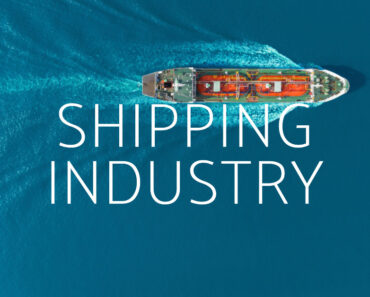The lithium. We’ll need A lot of it shortly. Useful lithium. It spends its whole life attempting to get rid of its one outside electron, but this process can be regulated and reversed. Properly constructed, the metal can discharge energy when needed, take up energy, and discharge it. It’s a battery. Lithium-ion batteries, with their perfect balance of safety and portability, have become the power source of choice for portable gadgets in just a few decades. Yet, Silicon Valley and Wall Street are currently obsessed with electric automobiles, the largest consumer electronics product. We’ll need many shortly. By 2030, the Kingdom will restrict internal combustion automobile sales.
236,000 metric tons of lithium carbonate are needed to replace 31.5 million automobiles. Every lithium mine in the world would have to dedicate its output to just one purpose for nine months to generate 236,000 metric tons of lithium carbonate, and there are many more nations, uses, and growth forecasts. Battery-grade lithium production is simple, unlike the industry and its issues. 92% of global output comes from Argentina, Chile, Australia, and China. The world’s largest hard-rock lithium mine, Greenbushes, in Western Australia, extracts the metal. The location was chosen because of its abundance of lithium-rich spodumene.
After extraction, the raw material is transported two and a half hours north to the Kwinana Lithium Factory in Perth, which is primarily owned and run by Chinese company Tianqi Lithium, which produces approximately half of the world’s lithium. Lithium hydroxide and other chemicals are supplied to battery manufacturers—LG Chem, CATL, or Panasonic—after refinement. The world’s answer is the issue. The UK, Iceland, Belgium, the Netherlands, Germany, Denmark, Norway, Sweden, Israel, Singapore, and South Korea have all pledged to prohibit internal combustion passenger vehicles within a decade. Based on 2019 passenger car sales, EV demand a decade from now will be 9.5 million per year. EV production would have to quintuple to get it, but even cautious projections won’t go below 9.5 million in 2032. Lithium demand is awakening to this. In 2021, Seaborne lithium costs surged from $8,000 per metric ton to over $30,000—a 400% increase in a year—and lithium is only one of several metals needed to make lithium-ion batteries. Most commercial batteries require cobalt and nickel, too. Nickel hit a decade-high in 2021, while cobalt surged.
The world needs additional metals, but it’s unlikely to obtain them. Thacker Pass, Nevada, is the largest industrial challenge. Thacker Pass is in a remote location. The nearest store is 30 minutes away, the grocery one hour, and Starbucks three. The few highways in northern Nevada see a few automobiles an hour traveling to and from rural farms, ranches, and settlements.
That may change shortly. Silver Peak Lithium Mine is 250 km south. Despite being the world’s largest EV market and home to the leading EV manufacturer, this is the only significant lithium mine in the US. China, a key EV market with big EV manufacturers, has made tremendous progress in building up its domestic lithium production capacity, and its firms are also present at other large lithium production sites. This worries American leaders. Hence, Thacker Pass—the US’s biggest lithium deposit—is targeted. This site might single-handedly make the US a major lithium producer, but building a mine there has been challenging.
Lithium reserves are cruelly spread throughout. They mostly live in deserts like Nevada. Thacker Pass gets fewer than 10 inches (25 cm) of rain annually. Lithium extraction and processing require massive amounts of water. The proposed Thacker Pass lithium mine would need 3,224 gallons or 12,204 liters of water each minute—roughly the amount in an above-ground pool.
Water would be pumped into the earth during extraction, refining, and dust control. Given its scarcity, the mine would have to pump this water from wells. The mining must obtain water rights from others to legally utilize it. However, that means there’s a direct tradeoff between one use and another, and in this case, the other use is mostly ranching and farming—two key tenants of the local economy.
The proposal may also make northern Nevada water even less accessible. The US Bureau of Land Management’s Environmental Impact Report revealed that the project might leak excessive quantities of arsenic into the groundwater table, shutting down the region’s water source for hundreds of years. It worries residents in a region where water underpins most economic activity. The troubles worsen. Thacker Pass is a wildlife corridor between the Double-H and Montana mountains, two biodiversity hotspots.
Hence, the environmental impact analysis deemed the project likely to damage or degrade thousands of acres of habitat used by pronghorn antelope, sage grouse, golden eagle, and other rare species. The Fort McDermitt Paiute and Shoshone Tribe is particularly worried about the project. They owe their tribe’s survival to Thacker Pass, where two of their families fled from American soldiers who were gathering up and sending indigenous people to reservations. They also consider the pass holy due to a historical slaughter. In a mine project-related court matter, the judge dismissed this allegation for lack of proof. The tribe also presented evidence that comparable resource-extraction enterprises, which are run by males, promote the rape and murder of indigenous women in adjacent locations.
Even with these few headline difficulties, the Thacker Pass lithium mining proposal is embroiled in a virtually impossible web of debate and dispute, and it’s not alone. The lithium triangle—Chile, Argentina, and Bolivia, which is home to some of the world’s most productive lithium production facilities—provides most of the evidence against the Thacker Pass mine.
The lithium triangle, a remote, arid region with small villages and a historically oppressed indigenous population, has experienced unprecedented economic boom at the expense of environmental and cultural damage. The challenges extend beyond lithium and location. According to the World Bank, 70% of the world’s cobalt, a key component of battery technology, originates from the Democratic Republic of the Congo, the 8th poorest nation. “Artisanal” mining—the illicit, informal activity of individuals mining cobalt and selling it to unscrupulous middlemen—makes up a worryingly high minority of cobalt mining. Child labor and tragic mine collapses are common since the industry has no safety requirements or laws.
Long-term exposure to cobalt mining has been related to serious health issues later in life and fatal birth deformities for local children. Ethical cobalt is nearly nonexistent. Lithium is seldom green. Lithium mining in accessible areas is unpopular, while cobalt mining in the DRC is still socially destructive. Demand for EVs and their batteries will make it hard to procure cobalt and lithium. Also, procuring ethical and green cobalt and lithium will be impossible. Decarbonizing driving requires solutions. Instead of seeking more raw resources, use less. Of course, by improving batteries. Solid state batteries are the best short-term solution.
Solid-state EV batteries employ metal ion transport instead of a liquid lithium-based electrolyte. This switch decreases fire danger and reduces the need for pricey safety systems. Solid state batteries may be manufactured without cobalt or nickel, two pricey and troublesome battery components. Solid state batteries’ energy density is very important.
Conventional lithium ion EV battery packs hold 114 watt-hours per pound, or 250 per kilogram. One pound of batteries could transport a Tesla Model 3 0.4 miles, or 1 kilogram 1.3 kilometers. Solid state batteries will store 175–225 watt-hours per pound or 400–500 per kilogram, tripling battery density. It implies Tesla could cut the weight of their half-ton battery pack and not only maintain range but expand it since the car would no longer need to carry the remainder of the battery pack.
At scale, solid state batteries may cost less than lithium-ion batteries. Yet the situation is growing. The industry’s effective triopoly supports the idea that battery output must be large to be cost competitive. EVs won’t move to solid state batteries until their cost is competitive, which won’t happen until the industry achieves a manufacturing capacity only EVs can deliver.
So, the industry has to wait for some level of scale through niche solid state battery applications in medical devices, race cars, and fighter jets; then wait for consumer electronics to realize the weight savings or battery life benefits the innovation could provide; then wait for the highest-end EVs to incorporate the technology to offer super-long ranges as a luxury; before solid-state batteries can finally reach a cost that would allow them to permeate the market.
Most projections put that tempting end-goal over a decade away. The world will require more lithium even if the solid-state battery transition happens faster. The Salton Sea—an environmental disaster—is far from Thacker Pass. A century ago, Colorado River floodwaters flooded an irrigation canal and gathered in Imperial Valley’s geographic low-point 236 feet or 72 meters below sea level. Now, the big pool is saltier and dirtier as part of the water has evaporated. Underground volcanoes superheat water hundreds of degrees thousands of feet below. Steam drives turbines in most power plants, thus bringing the water to the surface turns it into steam. Conventional power plants turn water into steam using coal or natural gas, but earth-generated steam is carbon-free.
Berkshire Hathaway Energy has erected 10 geothermal energy facilities in the region, but the superheated water is lithium-rich. Hence, geothermal facilities will add a stage to recover lithium from salty steam. Lithium is available in the Salton Sea, but technological barriers prevent commercially viable lithium production. Berkshire Hathaway Energy, the largest energy firm near the Salton Sea, aims to open its demonstration plant in 2022 owing to a significant government subsidy.
Several companies have started building their lithium-extraction prospects around the Salton Sea, so America’s first lithium boom-town may already be a certainty. Electric transportation requires these solutions. Batteries make electric vehicles dirtier than internal combustion vehicles. Yet, driving cars—including EVs—generates most of their emissions.
Even on fossil-fuel-based electric grids, electric automobiles produce 75% fewer emissions than internal combustion vehicles. When grids decarbonize, those who disagree are uninformed or trying to mislead. Better choices exist, though. The lithium gold rush may cut shortcuts. The globe must decide if sacrificing pristine areas like Thacker Pass for environmentalism is worth accelerating it locally. When the answer is yes, the globe will have to decide who should handle the local disaster.
If the world continues to burden the most vulnerable, will climate change be stopped even if it is slowed? Is it worth killing kids in a fight to stop terrorism? Is weakening an economy worth slowing a pandemic? Is it worth permitting gun ownership for self-defense even if criminal actors have easier access? Choosing a sacrifice has been one of the most divisive political topics in history. Again, the people must determine how much terrible to accept for the greater good with the destiny of the planet on their shoulders.






